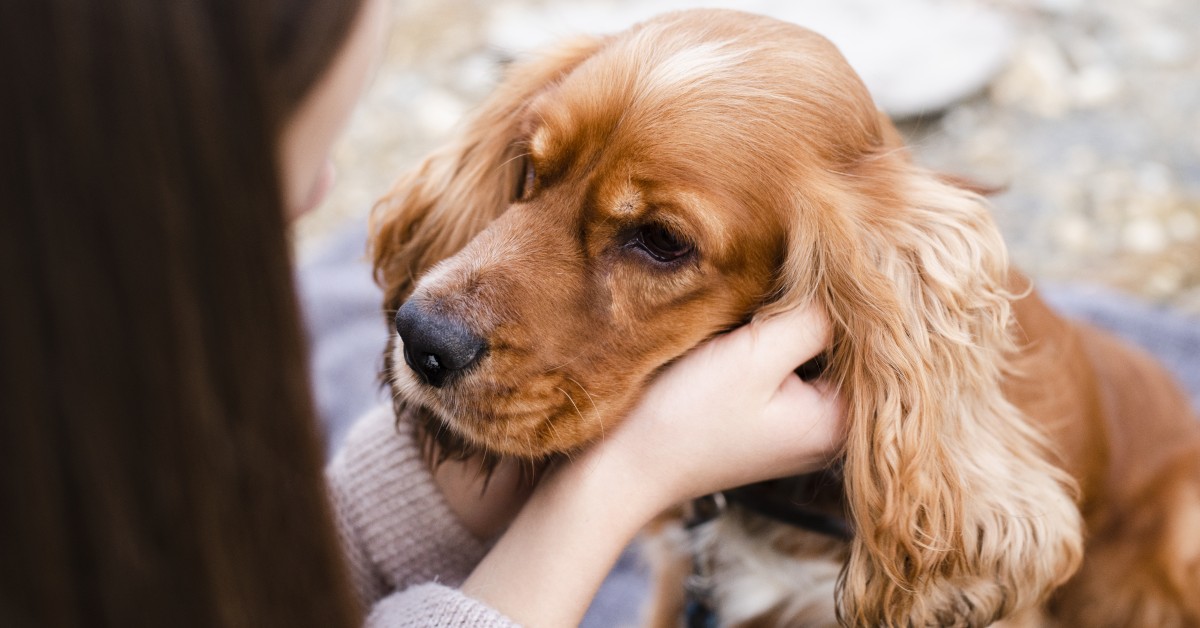Claw and Nail Disorders in Dogs
Many different infections and diseases can lead to claw and nail disorders in dogs.
.jpg)
Dogs depend on their nails to perform a wide range of functions. They provide stability and traction when they walk and run. Nails also come in handy during fun activities like digging or swatting objects. When the nails suffer trauma, develop a disease, or have an abnormality, it can make it difficult for dogs to behave normally.
If you believe your dog has a claw or nail disorder, it is important to know what symptoms to look for, what is causing the claw or nail disorder, and how best to treat it.
Basic Anatomy of a Dog Nail
Dog nails contain more than just hard, thick keratin. Inside, the nails have blood vessels and nerves, the portion referred to as the “quick.” These nerves and blood vessels only extend a portion down the dog’s nail before a hollow section of keratin shell makes up the end of the nail. The area where the nail exits the digit on the dog’s paw is called the nail bed.
Causes of Claw and Nail Disorders in Dogs
Claw and nail disorders in dogs can occur for a wide range of reasons, such as diseases, injuries, or poor nutrition. Some of the most common causes can be found below:
Nail Injuries
Nail injuries are relatively common in dogs as they can become caught on things when walking or running, resulting in a split or tear. When a nail injury occurs, it may bleed or the area around the nail may swell slightly. If you encounter a nail injury, inspect the extent of the damage, stop any bleeding, and clean the area. Nail injuries that appear red, swollen, or produce discharge should be seen by a veterinarian.
Nail Trim Accidents
It’s very common for dog owners to accidentally hit the “quick” when trimming their dog’s own nails. When this occurs, it severs the blood vessel and nerve inside the nail, causing bleeding and pain for the dog. If you accidentally hit your dog’s quick, apply pressure with a cloth. Have a styptic powder on hand to dip your dog’s nail into and press the powder to the bleeding area. Flour and cornstarch can also work in a pinch but are not as effective. Contact your vet if bleeding occurs for more than 15 minutes.
Nail Infections
Dogs can develop an infection of the nail bed, a condition known as paronychia. Nail infections can have a variety of causes, such as allergies, injuries, skin problems, or disorders of the nail. Most nail bed infections are fungal or bacterial and may require antibiotics or antifungal medication to treat. Some food and environmental allergies can also lead to itching or chewing of the feet, resulting in nail bed infections.
Other Causes
Claw and nail disorders in dogs can also have other causes, such as poor nutrition when a dog does not receive the right balance of vitamins, minerals, and other essential nutrients. Autoimmune disorders can also affect the nails, as well as the whole body. Treatment for autoimmune disorders usually involves the use of immunosuppressive drugs. Finally, tumors can develop on the paws or nail beds, directly impacting nail growth. Depending on if the tumors are cancerous, your vet may recommend surgery, radiation therapy, and/or chemotherapy.
Symptoms of Claw and Nail Disorders in Dogs
Claw and nail disorders in dogs can result in a wide range of symptoms. Some of the most common symptoms include:
- Broken nails
- Licking or chewing at the paws
- Pus or discharge from the nail
- Brittleness of the nail
- Sensitive paws
- Nail splitting
- Redness or swelling of the paws
- Biting at the nails
- Ingrown nails
- Misshapen or curved nails
- Bleeding nails
- Difficulty walking or lameness
- Crusting around nails
- Color change in nails
Treating Claw and Nail Disorders in Dogs
Treatment for claw and nail disorders is dependent on the underlying cause of the condition. In some cases, an antibiotic or antimicrobial soak may be enough to reduce inflammation and encourage healing. If nail problems persist, your vet may recommend the surgical removal of the nail plate to encourage drainage. Topical treatments and/or ointments can be administered to the affected area.
Common Types of Claw and Nail Disorders in Dogs
Some of the most common types of claw and nail disorders that develop in dogs include:
- Onychodystrophy – Abnormal nail or claw formation
- Paronychia – Inflammation of the nail fold
- Onychomadesis – Sloughing of the nail
- Macronychia – Nails that grow abnormally large
- Onychomalacia – Softening of the claw
- Onychitis – Inflammation of the claw matrix
- Onychoschizia – Splitting of the nail
Preventing Claw and Nail Disorders in Dogs
While it is not always possible to prevent all types of claw and nail disorders in dogs, there are some problems that you can avoid. When trimming your dog’s nails, avoid cutting too close to the nail bed or quick. Even a small nick to the vein can cause excessive bleeding and discomfort for your pet. The best way to protect your dog from painful nail injuries or disorders is to research the proper methods for trimming your dog’s nails.
In the event that your dog suffers trauma to the nails or nail beds, it’s important to closely examine the paws. More severe injuries will typically require treatment by a vet to prevent infection. If you suspect a bacterial or fungal infection, your vet can take a culture for further analysis. In the majority of cases, an application of topical ointment can clear up most nail issues.
Ready to start saving money on pet wellness care?
Then take a look at Mint Wellness, the pet wellness plan that provides fast reimbursement on routine pet care. Save on vaccinations, wellness exams, preventatives, dental, and more!
Learn More


